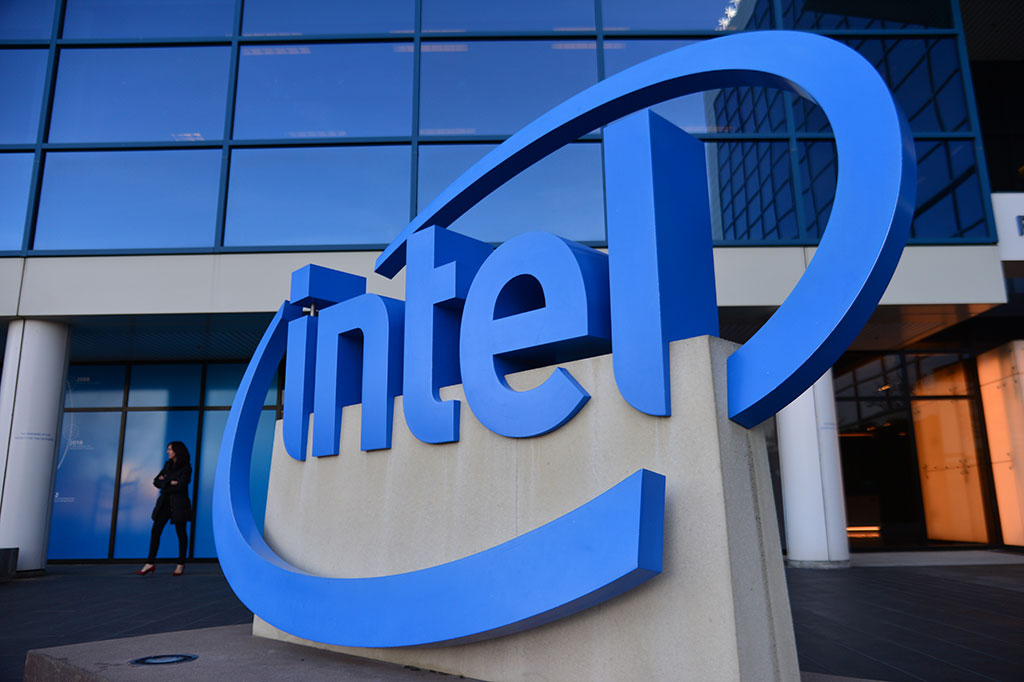Intel's stock has one of its worst days in a decade
What's happening at Intel?
Update: After dropping as low as 11 percent down, Intel's stock bounced back slightly, closing at a loss of 9 percent, the worst single-day performance since early 2016. We've updated our headline to eliminate confusion, which previously read "Intel's stock is getting hammered as it heads toward an 11-year low."
Original Story: Shares of Intel have dropped more than 10 percent in mid-afternoon trading today, a reaction to the company's first quarter earnings release and full-year revenue guidance. Normally we don't concern ourselves with the stock market, though in this case, Intel is headed toward the biggest single-day decline in more than a decade.
The last time Intel's stock took a nosedive this bad was on September 29, 2008, when it ended the day 10.1 percent below where it started. It might just beat that mark today.
What does that mean, and why should we care? Starting with the former question, the drop in price seems to be tied mostly to Intel's outlook. Despite posting higher than expected earnings, Intel CEO Bob Swan said the company was taking a "more cautious view of the year."
"We shipped a strong mix of high-performance products and continued spending discipline while ramping 10nm and managing a challenging NAND pricing environment. Looking ahead, we're taking a more cautious view of the year, although we expect market conditions to improve in the second half," Swan said.
According to Market Watch, Intel's earnings forecast is "way below Wall Street estimates." In addition, Intel's datacenter revenue dipped 6 percent to $4.9 billion last quarter, which is a steeper drop than the 2.5 percent decline analysts had anticipated.
As to why we should care, Intel is the top manufacturer of computer processors and makes some of the best CPUs for gaming. It's also been trudging along at a 14nm process node for quite some time now. Intel still claims it's on track for volume 10nm shipments this holiday season, and it anticipates getting into the battle for the best graphics cards in 2020.
Keep up to date with the most important stories and the best deals, as picked by the PC Gamer team.
While we wait for all that, AMD is prepping a new round of Ryzen processors based on a 7nm manufacturing process. AMD also has 7nm Navi waiting in the wings, and of course Nvidia is pumping out GeForce cards based on its Turing architecture, with and without dedicated hardware for real-time ray tracing and deep learning super sampling (RTX).
It's no secret that Moore's "Law"—the idea that microprocessor transistor counts double roughly every 24 months—isn't doing so hot these days. It was and remains a guiding target for Intel, but the rate of progress has slowed dramatically in the past decade. No more has that been more apparent than with Intel's delayed and troubled 10nm lithography, now two years overdue. Combine that with Intel's higher-than-expected revenue last year, and it's easy to see how revenue projections would go down.
The stock market is a funny thing, though, and I'm no Bobby Axelrod on this stuff. But I do know hardware, and the two are related to an extent. That said, Swan noted in an earnings call with investors that Intel is "transforming from a PC-centric company to a data-centric company, and our ambitions are bigger than they've ever been."
Transitions often come with bumps in the roads, this being one of them. This is also somewhat of a trial by fire for Swan, who became Intel's seventh CEO in 50 years this past January.
Paul has been playing PC games and raking his knuckles on computer hardware since the Commodore 64. He does not have any tattoos, but thinks it would be cool to get one that reads LOAD"*",8,1. In his off time, he rides motorcycles and wrestles alligators (only one of those is true).



